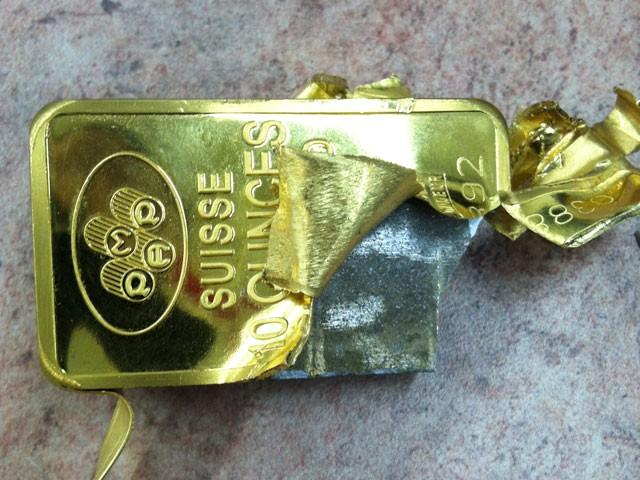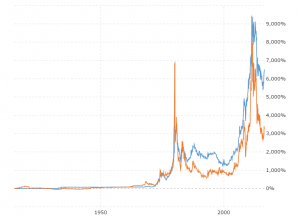How To Test For Fake Gold and Silver
One of the main appeals to investing in precious metals is that the product is physical – you can actually hold the silver or gold that you are buying. This is unlike paper money that is easy to print by counterfeiters as well as the government. Precious metals, because of their physical nature (size, and more importantly – weight) are more difficult to counterfeit. Even still, customers need to be vigilant against counterfeit bullion so we’ve compiled a rough list of ways to detect fake silver and gold. While the following methods don’t guarantee you against counterfeiting, they are a start. The only true way to ensure your gold and silver bullion are authentic is by running X-ray analysis on them. Fortunately, here at Golden Eagle we have a Thermo Scientific Niton X-Ray Fluorescence Analyzer.
Magnet Test
One of the easiest ways to detect if a metal is not pure silver or gold is to run a powerful magnet over top of it. We do this regularly as a quick method to sort out fake silver jewelry such as necklaces and bracelets. Silver is diamagnetic which means it will not “stick” to the magnet. But it will offer resistance and interact with the magnetic field.
Ping Test
When you strike your bullion with another piece of metal, you should hear a ringing sound that sustains for 1-2 seconds. In fact, there is a certain pitch/frequency that gold and silver should make when struck – jus like a tuning fork:
Silver – 6145 Hz
Gold – 4498 Hz
There are even iPhone Apps that you can download that will listen for this frequency while you check your silver.
Acid Test
The acid test has fallen out of favor when it comes to numismatic coins. This is because the test area where the acid is applied causes the test area to change color. You also need to purchase an acid test kit and learn to use it. When testing jewelry that is being sold for cash (melt) then it’s easier to test a small area of the bracelet or necklace. Another downside for using the acid test is that the test is only susceptible to the surface of the test area. So a coin may be silver plated, but the core of it could be lead or iron.
Ice Cube Test
Silver is one of the best conductors of thermal energy. Place a piece of ice on your silver and it should begin to melt immediately, as if it has been placed on something hot rather than room temperature.
Weight Test (Specific Gravity Test)
This test requires a little more equipment and some labor. Basically, you weigh a silver bar or coin and record the weight in grams. Then you fill up a cup of water (preferably distilled) and place it on the same scale. You then zero out (tare) the scale so it reads 0.00 with the cup of water in it. Then, the tricky part, you need to hang the bar or coin into the cup of water without touching the sides or the bottom – so it’s basically floating in there. Record that weight, it should be light, only a few grams. Then divide that weight into the original weight of the bar. If you have real/pure silver you should get a reading right around 10.50 which is the specific gravity of silver.
Specific Gravity of Silver: 10.5
Specific Gravity of Gold: 19.63
Caliper Test
A test method that is popular with bullion coins is the caliper test. All bullion coins made from world mints have known dimensions with very small tolerances. Because of this preciseness it is near impossible for a counterfeiter to get the dimensions within the correct tolerances especially when working with fake metals that do not have the same weight as gold and silver.









